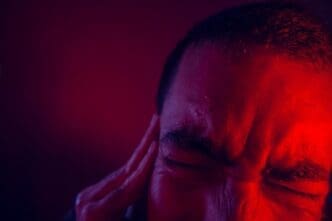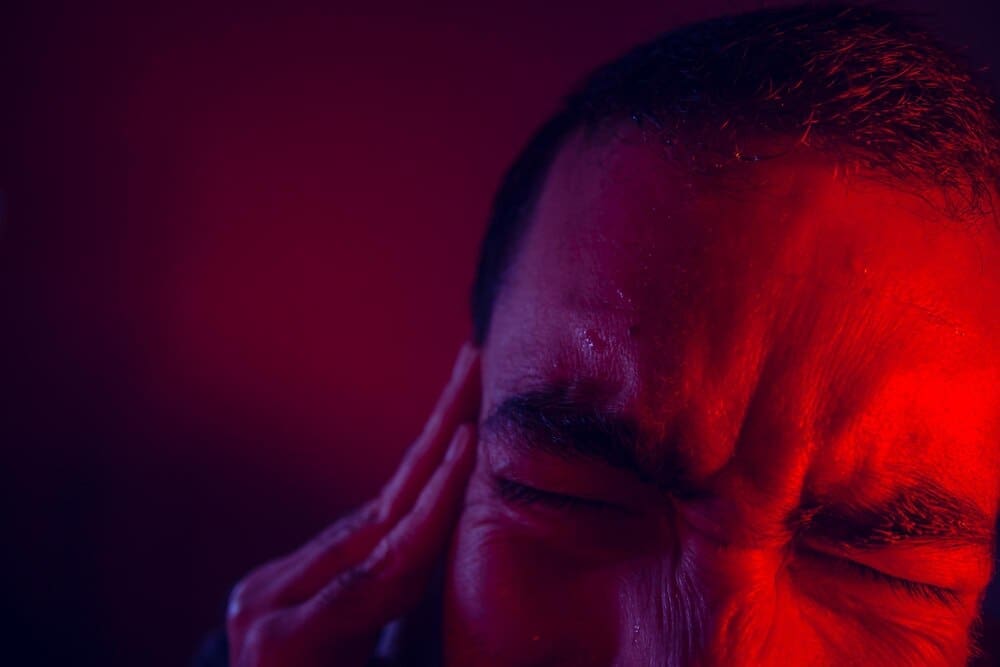For the millions of people worldwide living with chronic pain, the physical discomfort is often just one part of a larger struggle. A growing body of evidence reveals a profound and bidirectional link between chronic pain and major depression, two of the most common and disabling health conditions globally. This connection is not a coincidence or a sign of personal weakness; it is a complex interplay of shared brain chemistry, overlapping neural pathways, and psychological distress. Individuals with chronic pain are up to four times more likely to develop depression, and conversely, those with depression have a significantly higher risk of experiencing chronic pain, creating a debilitating cycle where each condition feeds and worsens the other.
What is the Pain-Depression Loop?
The relationship between chronic pain and depression is best understood as a vicious cycle, or a positive feedback loop. When pain persists for months or years, it fundamentally changes a person’s life, leading to stress, disability, and hopelessness. These feelings are the very hallmarks of depression.
As depressive symptoms take hold, they can, in turn, amplify the sensation of pain. Depression can lower a person’s pain threshold and tolerance, making existing pain feel more intense and unmanageable. This creates a downward spiral where worsening pain deepens depression, and the deepening depression makes the pain even harder to bear.
This isn’t just a subjective experience; it is a clinical reality. Research consistently shows that when pain and depression coexist, they result in greater functional impairment, poorer treatment outcomes, and a significantly reduced quality of life compared to when either condition exists alone. Breaking this cycle requires understanding the deep biological and psychological roots that bind them together.
The Brain’s Common Ground: Neurotransmitters and Pathways
The link between pain and mood is not just “in your head”; it’s in your brain’s very structure and function. Both conditions share common biological mechanisms, particularly involving neurotransmitters and specific brain regions that process both physical sensations and emotions.
Serotonin and Norepinephrine
Two of the most important chemical messengers involved in this connection are serotonin and norepinephrine. In the brain, these neurotransmitters are crucial for regulating mood, sleep, and appetite, which is why they are primary targets for many antidepressant medications. When their levels are imbalanced, it can lead to the classic symptoms of depression.
However, these same neurotransmitters also play a vital role in the spinal cord, where they act as a natural pain-suppressing system. They work to inhibit incoming pain signals, effectively “turning down the volume” on pain. When serotonin and norepinephrine levels are low—as is often the case in depression—this natural pain-relief system becomes less effective, making a person more sensitive to pain.
This shared pathway explains why certain classes of antidepressants, such as serotonin-norepinephrine reuptake inhibitors (SNRIs) and tricyclic antidepressants (TCAs), are often highly effective for treating chronic pain conditions like fibromyalgia and neuropathic pain, even in patients who are not clinically depressed.
The Limbic System and Prefrontal Cortex
Specific brain regions are also central to the pain-depression overlap. The limbic system, often called the brain’s “emotional center,” is responsible for processing feelings like fear, anger, and sadness. It is also intimately involved in processing the unpleasant emotional component of pain—the suffering that accompanies the physical sensation.
The prefrontal cortex, the hub of executive functions like decision-making and emotional regulation, works to modulate the signals coming from the limbic system. In both chronic pain and depression, brain imaging studies show altered activity in these areas. The emotional circuits become overactive, while the regulatory circuits in the prefrontal cortex become less effective, leading to both a heightened emotional response to pain and the persistent low mood of depression.
Inflammation: The Body’s Distress Signal
A third biological link is systemic inflammation. Both chronic psychological stress (from depression) and chronic physical stress (from pain) can trigger the body’s immune system to release inflammatory proteins called cytokines. While helpful in the short term for healing, chronic inflammation can have damaging effects.
These cytokines can cross the blood-brain barrier and disrupt the production and function of key neurotransmitters like serotonin. This can directly contribute to the development of depressive symptoms, including fatigue, social withdrawal, and a loss of pleasure—a state often described as “sickness behavior.” This inflammatory response also sensitizes pain pathways, making the body more reactive to painful stimuli.
More Than Just Biology: How Pain and Depression Affect Daily Life
Beyond the shared neurobiology, the practical, day-to-day realities of living with chronic pain create a perfect storm for the development of depression through behavioral and psychological changes.
Social Withdrawal and Isolation
Chronic pain makes it difficult to participate in activities that once brought joy and connection. Attending social gatherings, engaging in hobbies, or even maintaining a regular work schedule can become exhausting or impossible. This forced withdrawal from social life leads to profound isolation and loneliness, which are among the strongest predictors of depression.
Sleep Disruption
Pain and sleep have a toxic relationship. Pain makes it hard to fall asleep and stay asleep, while a lack of restorative sleep significantly lowers the body’s pain threshold the next day. Since sleep disturbance is also a core symptom and a major contributing factor to depression, this creates another self-perpetuating cycle that degrades both physical and mental health.
Catastrophizing and Helplessness
Pain catastrophizing is a negative thought pattern where individuals ruminate on their pain, magnify its threat, and feel helpless to manage it. Thoughts like, “This pain will never end” or “I can’t do anything because of this pain,” are common. This cognitive style is strongly linked to higher pain intensity and is nearly identical to the patterns of hopelessness and helplessness that define depression.
Activity Avoidance
A natural response to pain is to avoid movements or activities that might make it worse. While this is protective in the short term, over time it leads to a fear-avoidance cycle. People become fearful of movement, leading to physical deconditioning, muscle weakness, and joint stiffness. This deconditioning can actually increase pain and disability over the long run, further limiting life and reinforcing feelings of depression and despair.
Finding a Way Forward: Why Integrated Treatment is Key
Because pain and depression are so deeply intertwined, treating only one of the conditions is often ineffective. A patient may receive treatment for depression, but their mood will struggle to improve as long as debilitating pain persists. Similarly, managing pain is much harder when a patient is battling the fatigue, hopelessness, and low motivation of depression. The most effective approach is an integrated one that addresses both the mind and body simultaneously.
Psychotherapy: Rewiring Thoughts and Behaviors
Therapies like Cognitive Behavioral Therapy (CBT) are a cornerstone of integrated treatment. CBT helps patients identify and challenge the negative thought patterns—like catastrophizing—that fuel both pain and depression. It also teaches practical skills for managing symptoms, such as pacing activities to avoid the boom-bust cycle of overexertion and recovery, and developing coping strategies for pain flare-ups.
Acceptance and Commitment Therapy (ACT) is another powerful approach. ACT helps individuals learn to accept the presence of pain without letting it control their lives. It focuses on clarifying personal values and committing to actions that align with those values, helping patients build a meaningful life despite their physical limitations.
Medication: A Dual-Purpose Approach
As mentioned, certain antidepressants that act on both serotonin and norepinephrine (SNRIs and TCAs) can effectively treat both conditions by targeting their shared neurochemical pathways. A physician may prescribe these medications as a foundational part of a treatment plan. A comprehensive medication strategy may also include other non-opioid pain relievers or topical treatments.
Lifestyle and Physical Therapies
Re-engaging with life through movement and mindfulness is critical. Graded exercise programs, often guided by a physical therapist, help patients slowly and safely increase their activity levels. This not only improves physical function and reduces pain through strength and flexibility but also provides the powerful mood-boosting effects of exercise.
Practices like mindfulness meditation and yoga have been shown to reduce the emotional reactivity to pain. They teach individuals to observe their pain sensations without judgment, which can lessen the suffering and distress associated with it. Improving sleep hygiene by establishing a consistent routine and creating a restful environment is another fundamental step that benefits both pain and mood.
Conclusion
The connection between chronic pain and depression is a clinical reality rooted in the intricate wiring of our nervous system and the profound impact of suffering on a person’s life. They are not separate problems but two sides of the same coin, locked in a cycle that can feel impossible to escape. However, understanding this link is the first step toward breaking free. By adopting an integrated treatment approach that addresses the biological, psychological, and behavioral factors at play, individuals can reclaim their well-being. Recovery is possible, and it begins with treating the whole person—mind and body together.














